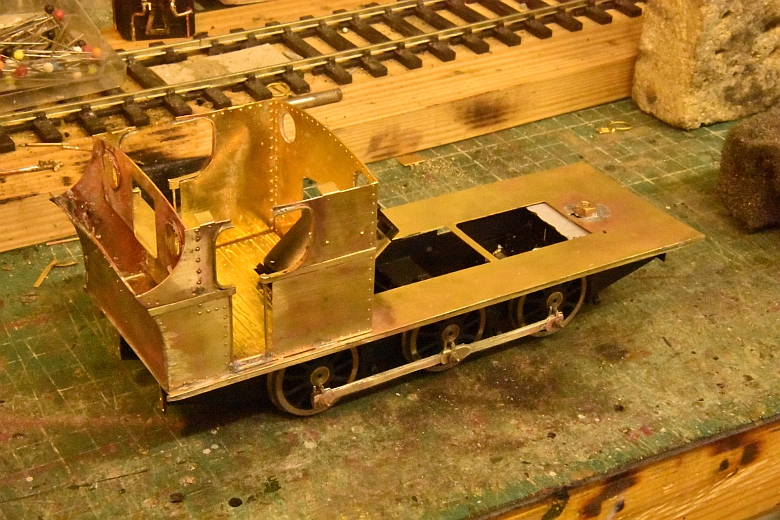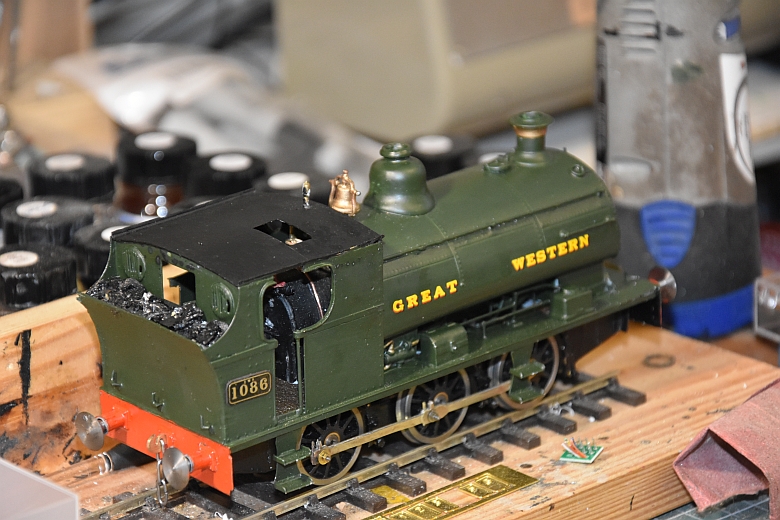O Gauge Modelling on the GWR
A personal Journey
Here is the kit:
Its been a long while in the starting but has now just taken off. I find some of the etches a little on the 'thin' side and this can be an issue particularly with the chassis. So it is really important to spend time making sure all is square and neat.

The cab floor and sides are not an accurate fit, so some jiggling is necessary to make them fit. I put the floor and rear cab and cab sides together before fitting to the body base. The front end is narrower by a couple of mm than the rear. All the make options seem to be the same in this respect. But it is quite doable to put together as shown above.

The backplate was super glued together and the main parts built as shown here. This will cover the body of the motor.
The firebox, firebox and boiler has been formed up and soldered into place. It seems also that these need cutting down slightly as they lift the boiler and tanks too high above the running plate leaving a gap at both ends. Once resized however, this builds up the tank assembly which fits snugly but is not fitted to the running plate until all is squared up and the handrails and boiler front end have been put together as well, as shown here. Click the image to enlarge.
The brake shoe holes are set too close to the wheels and can cause short-outs when electrifying the loco and therefore I re-drilled them a little further away.
Pickups from the rail are from the first two pairs of driving wheels. To make this more effective I used horn blocks on the front axle, removed the springs and used the pickup wire as tension aids to keep the wheels on the track.
Finally, the body has had an undercoat of U-POL Acid #8 and three coats of loco green.
Running issues update: Fitting the ESU decoder has caused a few unnecessary issues though. The locomotive has been tested without the decoder and runs freely in both directions. With the decoder installed it runs freely when the sound is switched off but exhibits a judder intermittently at all speeds when the sound is switched on. I spent some time adjusting various CVs to get the loco running properly. But, switching the sound on and off while it was running exhibited and eliminated the judder accordingly. Prior to this I was assuming that the chassis was malfunctioning or that my adjustments to the CVs were making it judder. So re-jigging the chassis by putting in the first place horn blocks on the front axle and then the same to the central axle made no difference. I even opened out the central connecting rod holes in a vertical direction to provide more play in the wheel sets and again the same result. it was only when the decoder was switched off that the judder disappeared. Consequently the decoder is going back to the supplier for testing and replacement. So watch this space as they say.
The cab roof is a big disappointment as it is badly fitting and just under size. 2mm wider would make all the difference. But the coal is in the bunker and the transfers are on the sides and covered with matt varnish.
Extras:
motor and gear drive from ABC gears
Slaters wheels
ESU Decoder